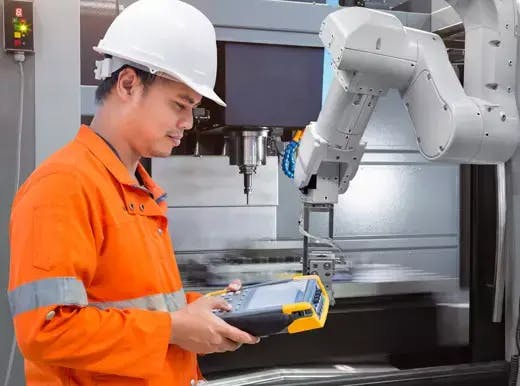Robotic System Integration
Designetics also integrates with client robotics systems seamlessly; often Designetics works with manufacturers to create automated fluid application systems. And, Designetics offers its clients industrial dispensing equipment that adjusts the flow rate and shot size to allow for more precise application of fluids. Designetics even offers a handheld dispenser that mimics the capabilities of fully automated fluid dispensing equipment—offering humans the ability to replicate the exacting workflow of their robotic counterparts.
